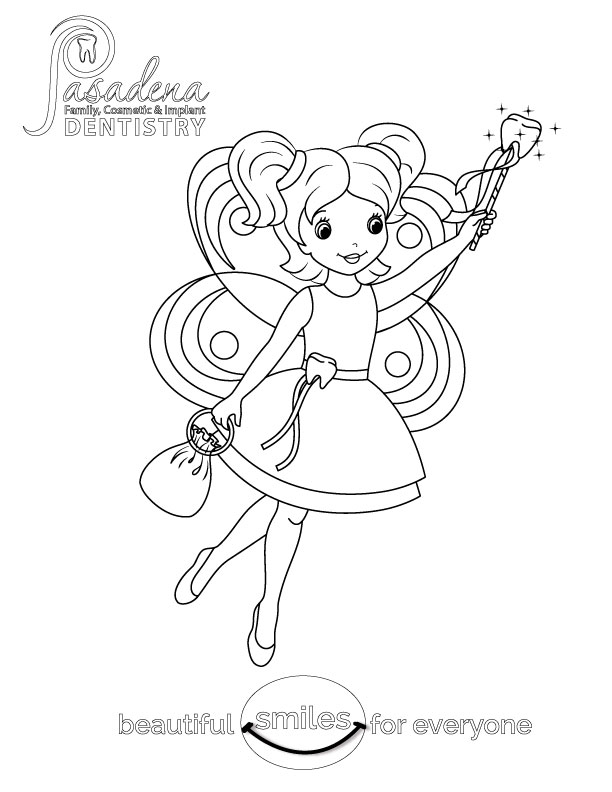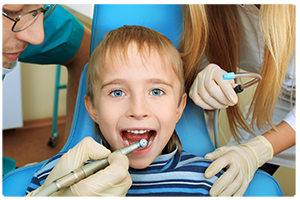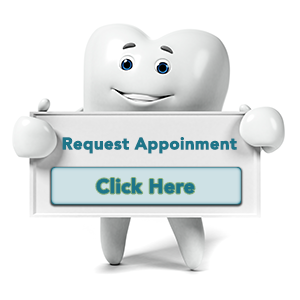Pediatric Dentistry
The first “regular” dental visit should be just after your child’s third birthday. The first dental visit is usually short and involves very little treatment. We may ask the parent to sit in the dental chair and hold their child during the examination. The parent may also be asked to wait in the reception area during part of the visit so that a relationship can be built between your child and your dentist.
We will gently examine your child’s teeth and gums. X-rays may be taken (to reveal decay and check on the progress of your child’s permanent teeth under the gums). We may clean your child’s teeth and apply topical fluoride to help protect the teeth against decay. We will want to ensure your child is receiving adequate fluoride at home. Most importantly, we will review with you how to clean and care for your child’s teeth.
What should I tell my child about the first dental visit?
We are frequently asked this question. We suggest you prepare your child the same way that you would before their first haircut or trip to the shoe store. Your child’s reaction to his first visit to the dentist may surprise you.
Here are some “First Visit” tips:
- Take your child for a “preview” or online tour of the office.
- Read books with them about going to the dentist.
- Review with them what the dentist will be doing at the time of the first visit.
- Speak positively about your own dental experiences
During your first visit the dentist will:
- Examine your mouth, teeth and gums
- Evaluate adverse habits like thumb sucking
- Check to see if you need Fluoride
- Teach you about cleaning your teeth and gums
- Suggest a schedule for regular dental visits.
What about preventative care?
At our office we are most concerned with all aspects of preventive care. We use the latest in sealant technology to protect your child’s teeth. Sealants are “high-tech” plastics that are bonded to the chewing surfaces of decay prone back teeth. This is just one of the ways we will set the foundation for your child’s lifetime of good oral health.
Cavity prevention
Most of the time cavities are due to a diet high in sugary foods and a lack of brushing. Limiting sugar intake and brushing regularly, of course, can help. The longer it takes your child to chew their foods the longer the residue stays on their teeth, the greater the chances of getting cavities.
Every time someone eats, an acid reaction occurs inside their mouth as the bacteria digests the sugars. This reaction lasts approximately 20 minutes. During this time the acid environment can destroy the tooth structure, eventually leading to cavities.
Consistency of a person’s saliva also makes a difference; thinner saliva breaks up and washes away food more quickly. When a person eats diets high in carbohydrates and sugars they tend to have thicker saliva, which in turn allows more of the acid-producing bacteria that can cause cavities.
Tips for cavity prevention:
- Limit Frequency of meals and snacks.
- Encourage brushing, flossing and rinsing.
- Watch what you drink.
- Avoid sticky foods.
- Make treats part of meals.
- Choose nutritious snacks.
The first baby teeth that come into the mouth are the two bottom front teeth. You will notice this when your baby is about 6-8 months old. Next to appear will be the 4 upper front teeth and the remainder of your baby’s teeth will follow periodically. They will usually appear in pairs along the sides of the jaw until the child is about 2 1/2 years old.
At around 2 1/2 years old your child should have all 20 teeth. Between the ages of 5 and 6 the first permanent teeth will begin to erupt. Some of the permanent teeth replace baby teeth and some don’t. Don’t worry if some teeth are a few months early or late as all children are different.
Baby teeth are important as they not only hold space for permanent teeth but they are important to chewing, biting, speech and appearance.
For this reason, it is important to maintain a healthy diet and daily hygiene.



